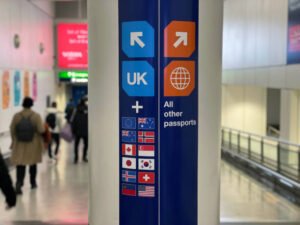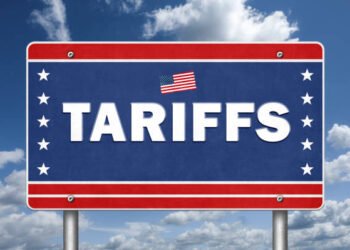Advertisement
Struggling to decide between launching your international career in the UK or the USA? While both nations boast world-class economies, promising salaries, and global recognition, the path to success, from getting a work visa to settling into everyday life. It differs in ways that can deeply impact your future. If you’re serious about living and working abroad, making the right choice between these two giants could shape not just your job, but your entire life trajectory.
For many global professionals, the choice between working in the United Kingdom and the United States has never been simple. Both countries continue to attract skilled workers through robust job markets, globally respected institutions, and rich cultural diversity. However, despite their similarities, they offer very different opportunities when it comes to work visa processes, salary expectations, job availability, work culture, and immigration pathways.
Advertisement
In 2025 and beyond, this decision has become even more complex due to ongoing labor shortages, post-pandemic recovery strategies, AI-led industry transformations, and immigration policy reforms on both sides. The UK has positioned itself as a destination for structured, supportive migration with its points-based system, while the US offers the allure of high-paying jobs and the American dream, but with tougher visa lotteries and longer waits.
In this comprehensive guide, an in-depth comparison will be made between working in the UK and the USA, from the visa you’ll need, to what you’ll earn, to how your quality of life will be shaped. Whether you’re a healthcare professional, tech expert, engineer, or skilled tradesperson, this guide is tailored to help you make the most informed decision before your move.
Let’s begin by examining the job markets and economies of both countries.
An Informed Career Choice Between Two Economic Powerhouses
Global Workers Are Often Faced With This Dilemma
When international workers seek to migrate for career advancement, the United Kingdom and the United States are typically placed at the top of the list. These nations have consistently offered strong economies, global job networks, and vast immigration opportunities. However, deciding between the two has remained complex due to differing visa systems, salary structures, work cultures, and quality of life.
Economic Overview and Job Market Outlook
The UK’s Economic Environment in 2025
In 2025, the United Kingdom has been projected to experience moderate GDP growth, fueled by advancements in clean energy, health care innovation, and digital transformation. A skills shortage in sectors like healthcare, education, and construction has been observed, making foreign talent essential.
The USA’s Economic Strength and Recovery
The United States, in contrast, has continued to thrive as the world’s largest economy. High demand in technology, health sciences, and logistics has been sustained, with AI integration and infrastructure investment being emphasized by both federal and state governments. Job creation has been prioritized post-pandemic, drawing skilled migrants globally.
Work Culture and Employment Norms
Typical Work Environment in the UK
Work culture in the UK has been characterized by a strong emphasis on work-life balance. The standard workweek typically consists of 37–40 hours, and legally mandated vacation time is 28 paid days per year (including bank holidays). Formal dress codes, collaborative team environments, and modest hierarchy are commonly observed.
Corporate Culture in the USA
In the USA, a more competitive and productivity-focused work culture has been promoted. Standard full-time roles are based on 40+ hours per week, and federal law does not mandate paid vacation, leaving it to the discretion of employers. A culture of ambition, innovation, and self-promotion is widely practiced across industries.
UK Work Visa System Explained
Main Work Visas Offered by the UK in 2025
The UK government has introduced several streamlined work visa options. The most popular include:
- Skilled Worker Visa: Designed for foreign professionals offered jobs in eligible occupations.
- Health and Care Worker Visa: Tailored for foreign medical staff.
- Global Talent Visa: Reserved for leaders in academia, arts, or digital technology.
Key Features of UK Work Visas
- Employer sponsorship is required.
- A Certificate of Sponsorship (CoS) must be issued.
- English proficiency must be proven.
- Minimum salary thresholds must be met.
- The Immigration Health Surcharge (IHS) must be paid.
Visa Validity and Extension
Visas are usually granted for 3–5 years. Extensions are allowed. After 5 years of continuous stay, Indefinite Leave to Remain (ILR) can be applied for.

US Work Visa System Explained
Major US Work Visa Categories
The United States has maintained a more complex visa system. The most utilized work visas include:
- H-1B Visa: Issued for specialty occupations (STEM, finance, etc.).
- L-1 Visa: Granted for internal company transfers.
- O-1 Visa: For individuals with extraordinary abilities.
- TN Visa: Exclusive to Mexican and Canadian professionals (under NAFTA/USMCA).
Unique Challenges of the US Visa System
- The H-1B has an annual cap of 85,000, filled via a lottery system.
- Sponsorship by a US employer is mandatory.
- Labor Condition Application (LCA) approval from the Department of Labor is required.
- Green Card (permanent residency) transitions are allowed from several work visas.
Side-by-Side Comparison of Visa Systems
| Factor | UK Work Visa | US Work Visa |
|---|---|---|
| Employer Sponsorship | Mandatory | Mandatory |
| Language Requirement | Yes (English test) | No mandatory language test |
| Medical Exam Requirement | Yes | Usually no |
| Processing Time | 4–8 weeks | 2–6 months (longer if PERM required) |
| Visa Lottery | No | Yes (for H-1B) |
| Path to Permanent Residency | After 5 years (ILR) | Green Card after 1–5 years |
| Spouse Work Rights | Yes (Dependent Visa) | Yes (with H-4 EAD or L-2 visa) |
In-Demand Jobs in the UK for 2025
Industries Experiencing Shortages
- Healthcare: Nurses, doctors, and care workers
- Engineering: Civil, mechanical, and electrical engineers
- IT and Software: Cybersecurity, developers, analysts
- Education: Math and science teachers
- Hospitality & Trades: Chefs, electricians, plumbers
Skilled Occupation List
A formal Shortage Occupation List has been maintained by the UK Home Office, providing reduced salary thresholds and priority processing for listed professions.
In-Demand Jobs in the USA for 2025
Fast-Growing US Industries
- Technology: AI specialists, software engineers, data scientists
- Healthcare: Registered nurses, medical technologists, physicians
- Finance & Business: Accountants, auditors, financial analysts
- Engineering: Electrical, software, biomedical engineers
- Construction & Infrastructure: Project managers, safety inspectors
STEM Opportunities and OPT Extensions
Graduates in STEM fields have been provided with extended Optional Practical Training (OPT), and H-1B petitions for them have been prioritized.
Salary and Compensation Comparison
Average Salaries in the UK by Sector
- IT/Software Developer: £45,000–£65,000
- Nurse: £28,000–£42,000
- Civil Engineer: £40,000–£55,000
- Secondary School Teacher: £30,000–£44,000
- Accountant: £38,000–£55,000
Average Salaries in the USA by Sector
- Software Developer: $85,000–$130,000
- Nurse: $70,000–$100,000
- Civil Engineer: $80,000–$110,000
- Teacher (High School): $50,000–$70,000
- Accountant: $65,000–$90,000
Factors Impacting Take-Home Pay
- Taxation: Higher tax brackets are found in the UK; however, public healthcare reduces out-of-pocket medical expenses.
- Healthcare Costs: In the USA, private insurance is often employer-provided but deductibles and premiums can be high.
- Currency Strength: The US dollar has maintained stronger purchasing power in some global markets compared to the British pound.
Cost of Living Adjustments
Housing and Utilities
- UK: London rents range from £1,400–£2,500/month
- USA: NYC apartments cost $2,000–$4,000/month; cheaper alternatives in Midwest and Southern states
Food and Transport
- The UK benefits from public transport infrastructure and affordable grocery prices.
- The USA has lower petrol costs but higher vehicle ownership rates and health insurance costs.
Social Benefits and Legal Protection
UK’s Welfare and Social Programs
- Free public healthcare under the NHS
- Generous maternity leave (up to 52 weeks)
- Employer pension contributions and housing support
US Employer-Based Benefits
- Strong private-sector health insurance
- Paid time off, stock options, 401(k) retirement plans
- Parental leave is offered voluntarily by employers (not federally mandated)

Pathways to Permanent Residency
In the UK
After 5 years on a Skilled Worker Visa or other eligible routes, an application for Indefinite Leave to Remain (ILR) may be submitted. Spouses and children may be included. British citizenship can be pursued after an additional year.
In the USA
Transition from H-1B or L-1 to a Green Card is possible. Employment-based categories (EB-1 to EB-3) are commonly used. Naturalization for citizenship is allowed after 5 years as a Green Card holder.
Life Quality and Immigration Support
Immigration Friendliness
The UK has been considered relatively supportive of immigrant families, with dependents allowed work and study rights. The USA offers more complex immigration bureaucracy, though long-term opportunity exists.
Diversity and Community Support
Both nations are home to large immigrant communities:
- UK Cities: London, Birmingham, Manchester
- US Cities: New York, Los Angeles, Chicago, Houston
Public Safety and Lifestyle
- The UK is regarded as safer overall with stricter gun laws.
- The USA offers more personal freedom but higher crime rates in some cities.
Summary Breakdown: Choosing What Works Best
| Criteria | United Kingdom | United States |
|---|---|---|
| Visa Complexity | Easier, No lottery | More complex, H-1B cap and lottery |
| Salary Potential | Moderate | Higher (especially in tech and STEM) |
| Healthcare Cost | Low (public NHS) | High (private insurance) |
| Work-Life Balance | More generous leave, shorter hours | Longer hours, fewer vacation days |
| Permanent Residency Process | 5 years to ILR | Green Card process takes longer |
| Dependent Rights | Full work and study access | Conditional, varies by visa |
Frequently Asked Questions
Can work visas in one country be transferred to the other?
No. Separate processes must be followed for each. Employers in each country must offer sponsorship under that country’s specific visa system.
Which country is easier to migrate to?
In terms of process transparency and timelines, the UK has been viewed as more predictable. The US visa lottery system makes outcomes less certain.
Is it possible to work in both countries throughout a career?
Yes, dual-country experience is increasingly common among global professionals, especially in tech, academia, and finance.
Final Words & Conclusion
A career decision involving international relocation must be taken with careful consideration. While the USA offers higher earning potential and a dynamic economy, the UK compensates with a more structured immigration path, social benefits, and work-life balance.
International professionals are encouraged to evaluate job offers, visa pathways, and lifestyle priorities before committing. Whichever path is chosen, the potential for success is great, when entered with preparation and a clear strategy.


















